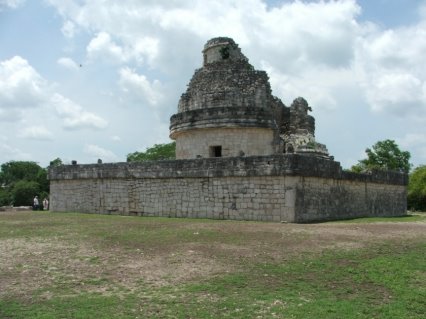It’s the best weather and the best sleep I’ve had on a camping trip in 20 years.
In the thin morning light, a gray catbird picks at the leaf litter beside the trail. They’re small birds, but they migrate over a large range. Some of them reach southern Mexico. It’s possible that this little fellow spent the winter on the Yucatan Peninsula. Maybe, he even spent time in Chichen Itza, a sprawling campus of Mayan temples and other ritual structures.
 There’s a building there, or most of one that 1,000 years ago contained reflecting pools around a small tower, used by astronomer-priests for watching the heavens. Another, the Pyramid of Kukulkan, marks the spring and fall equinoxes.
There’s a building there, or most of one that 1,000 years ago contained reflecting pools around a small tower, used by astronomer-priests for watching the heavens. Another, the Pyramid of Kukulkan, marks the spring and fall equinoxes.Suddenly, I’m less disappointed about the meteor shower that wasn’t. The gray catbird came all the way from his observatory in Mexico to watch it. I, on the other hand, got to spend the night camping with my son, on an expedition to chase after something elusive.
Photo credit: The author.
